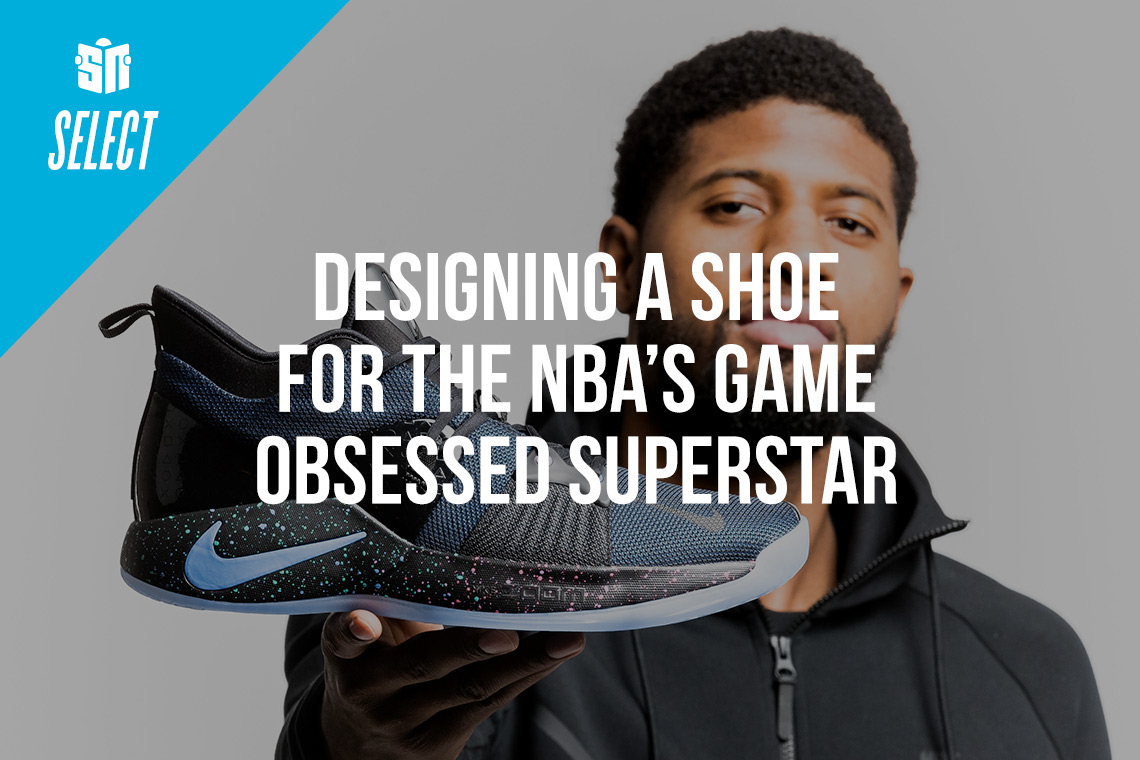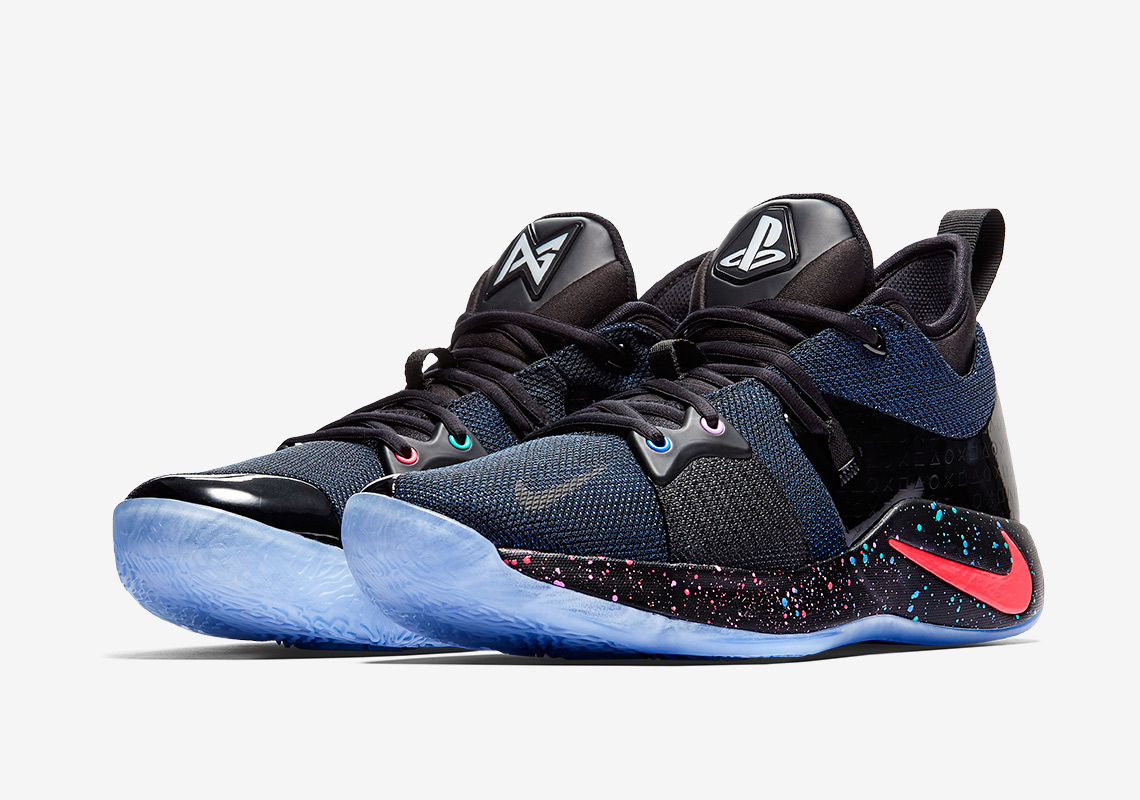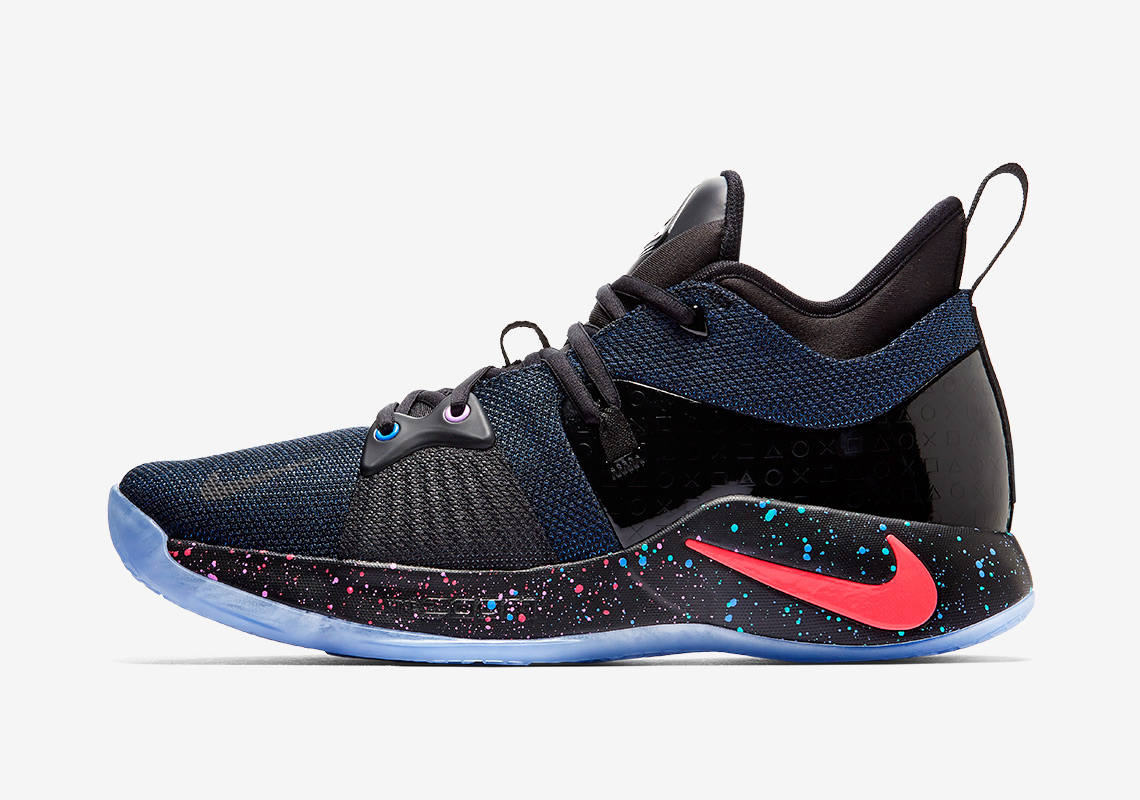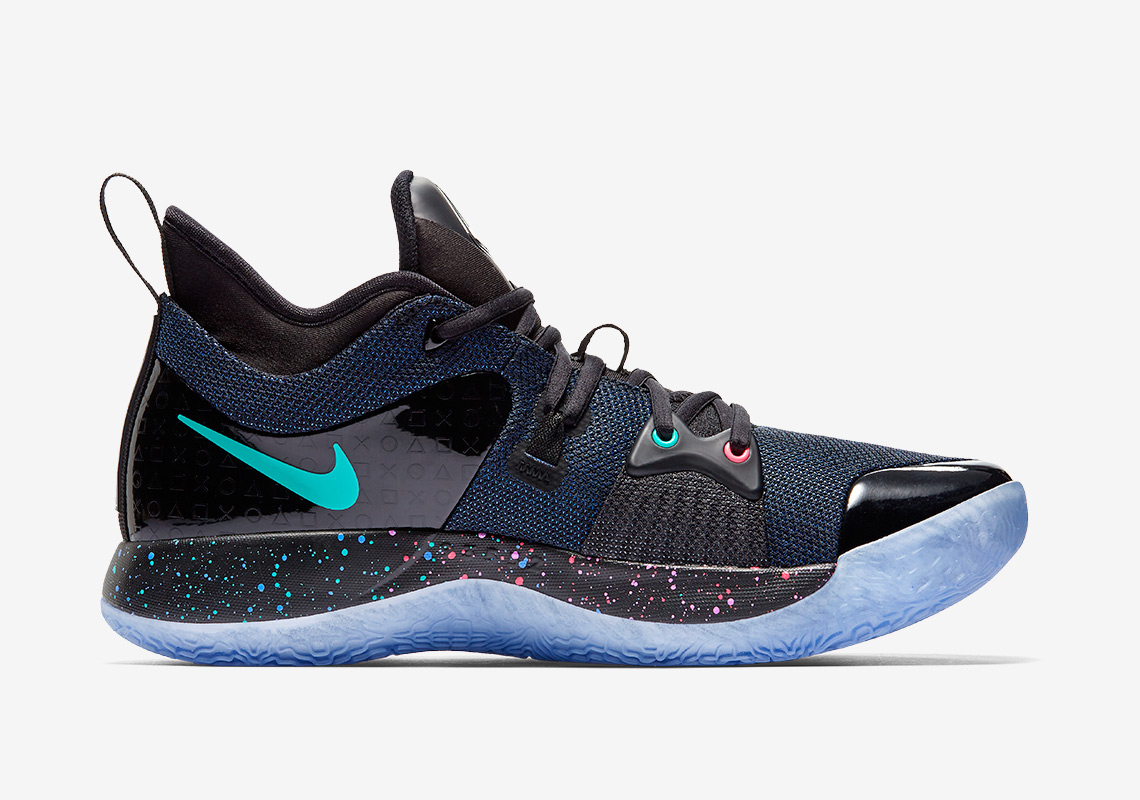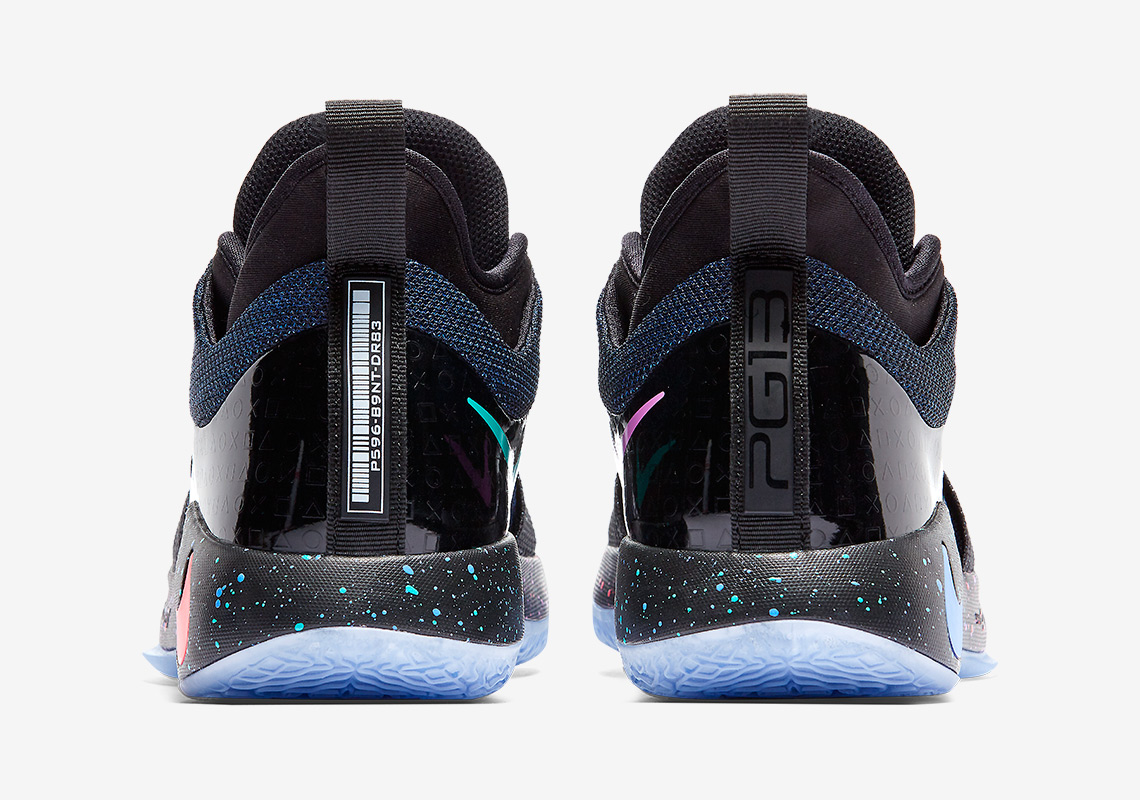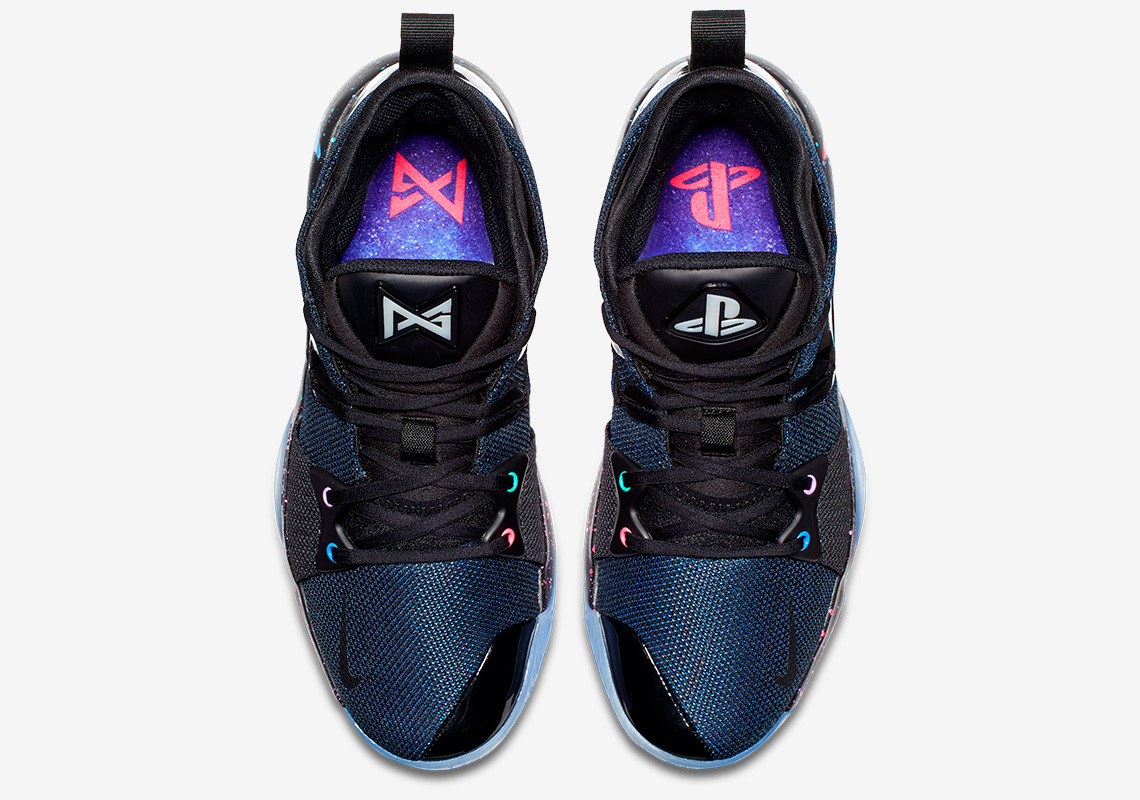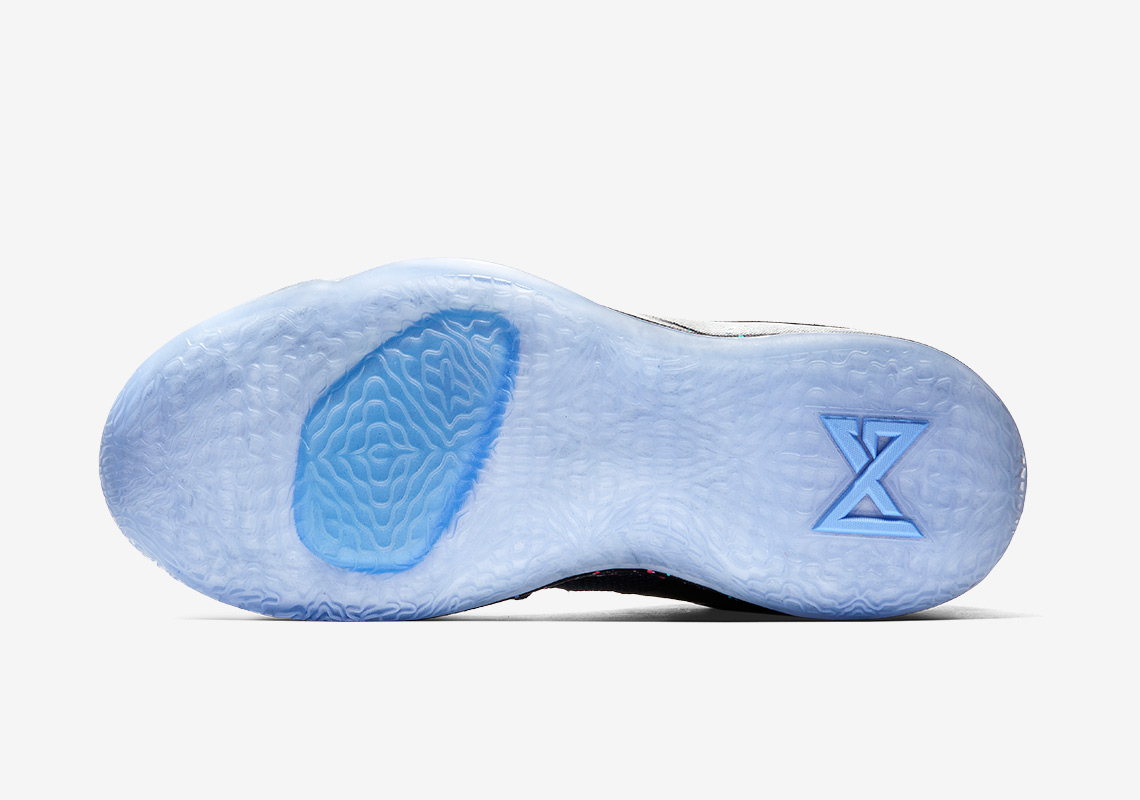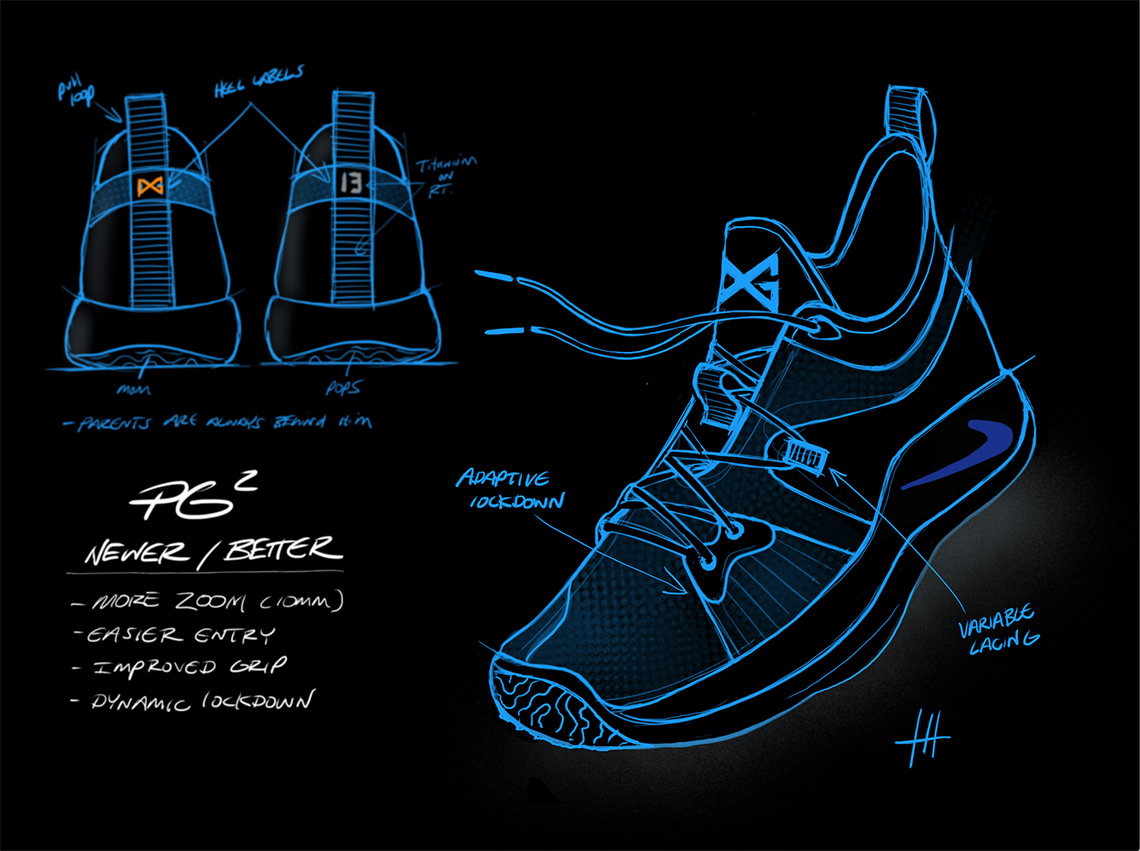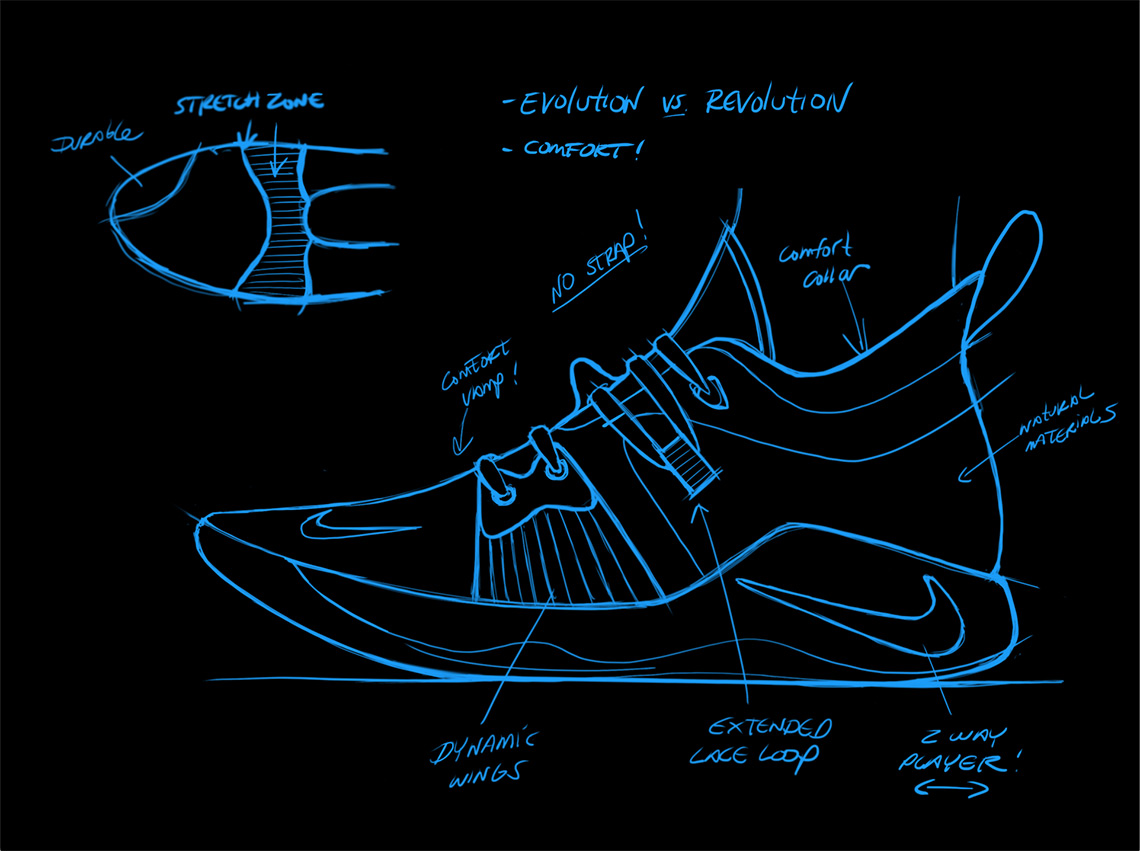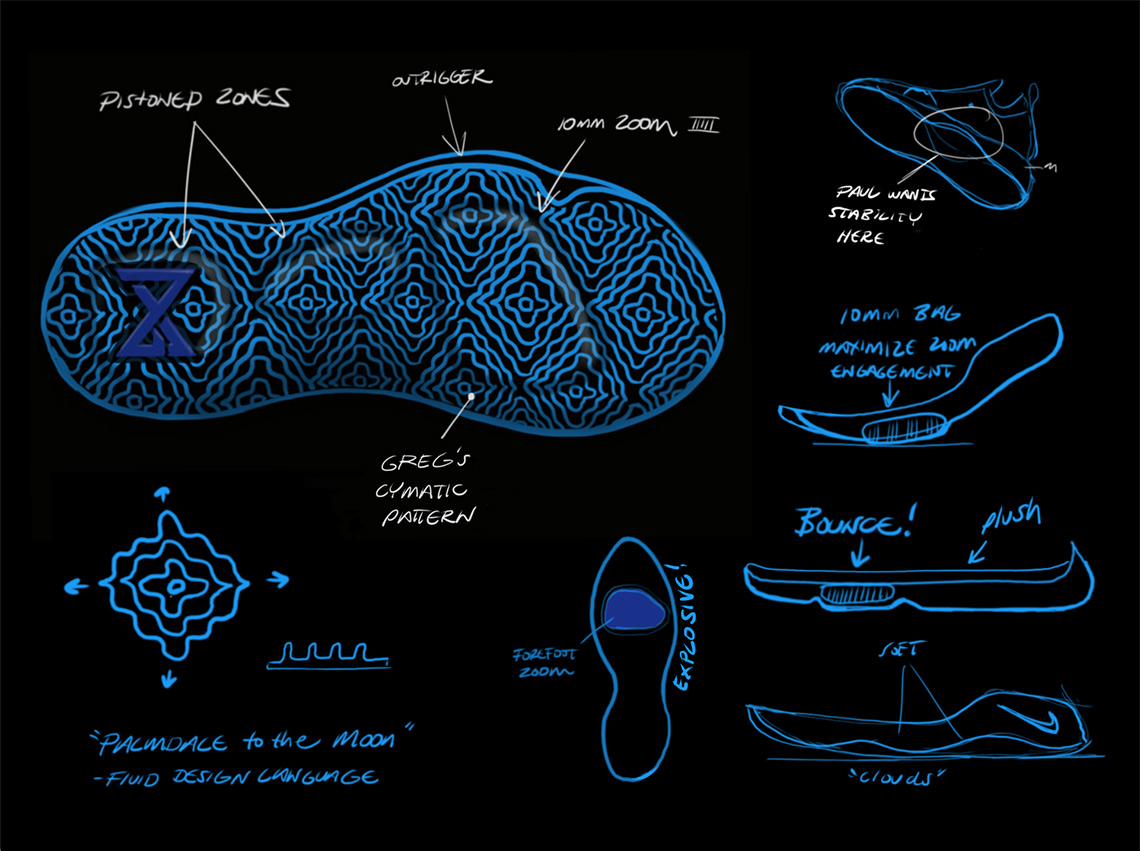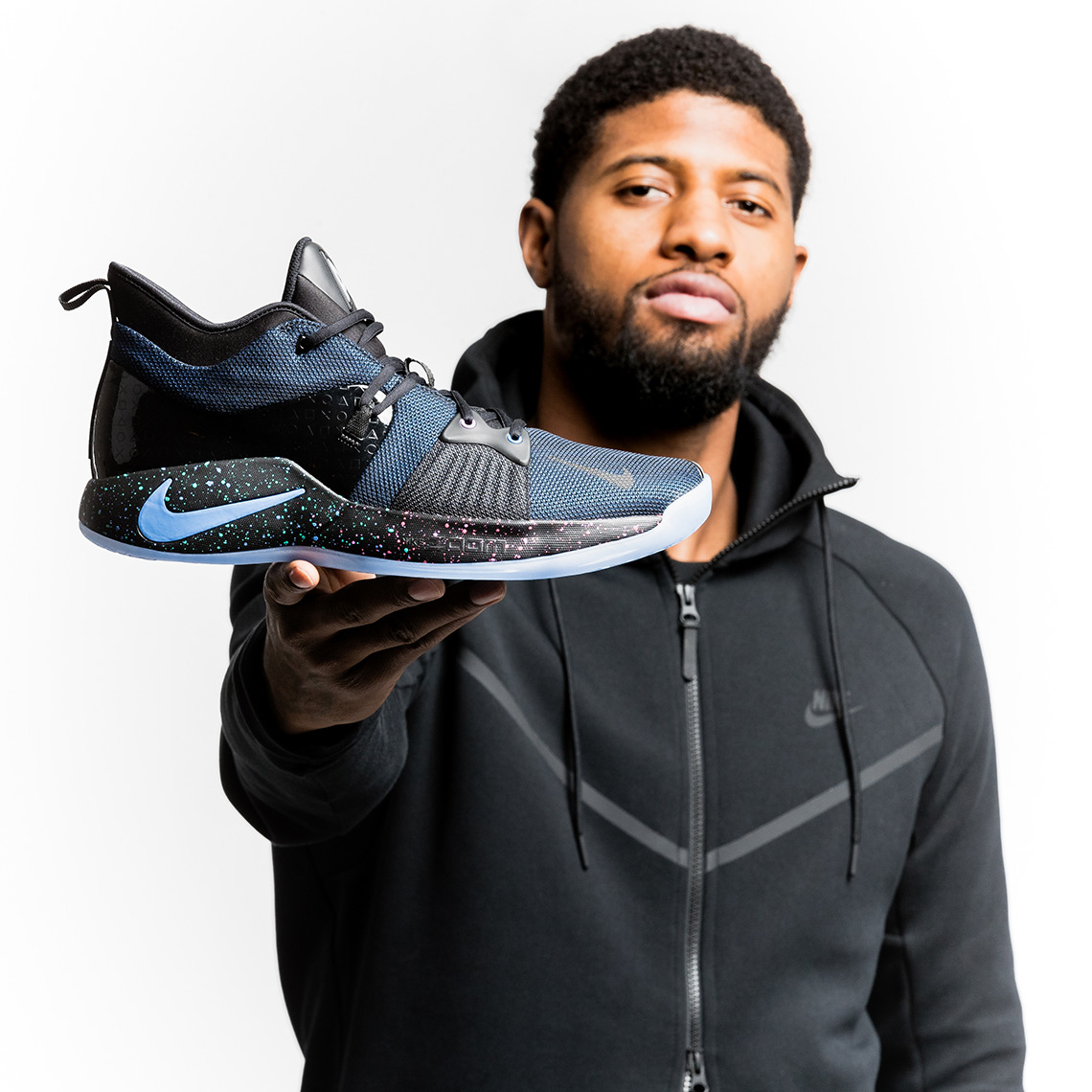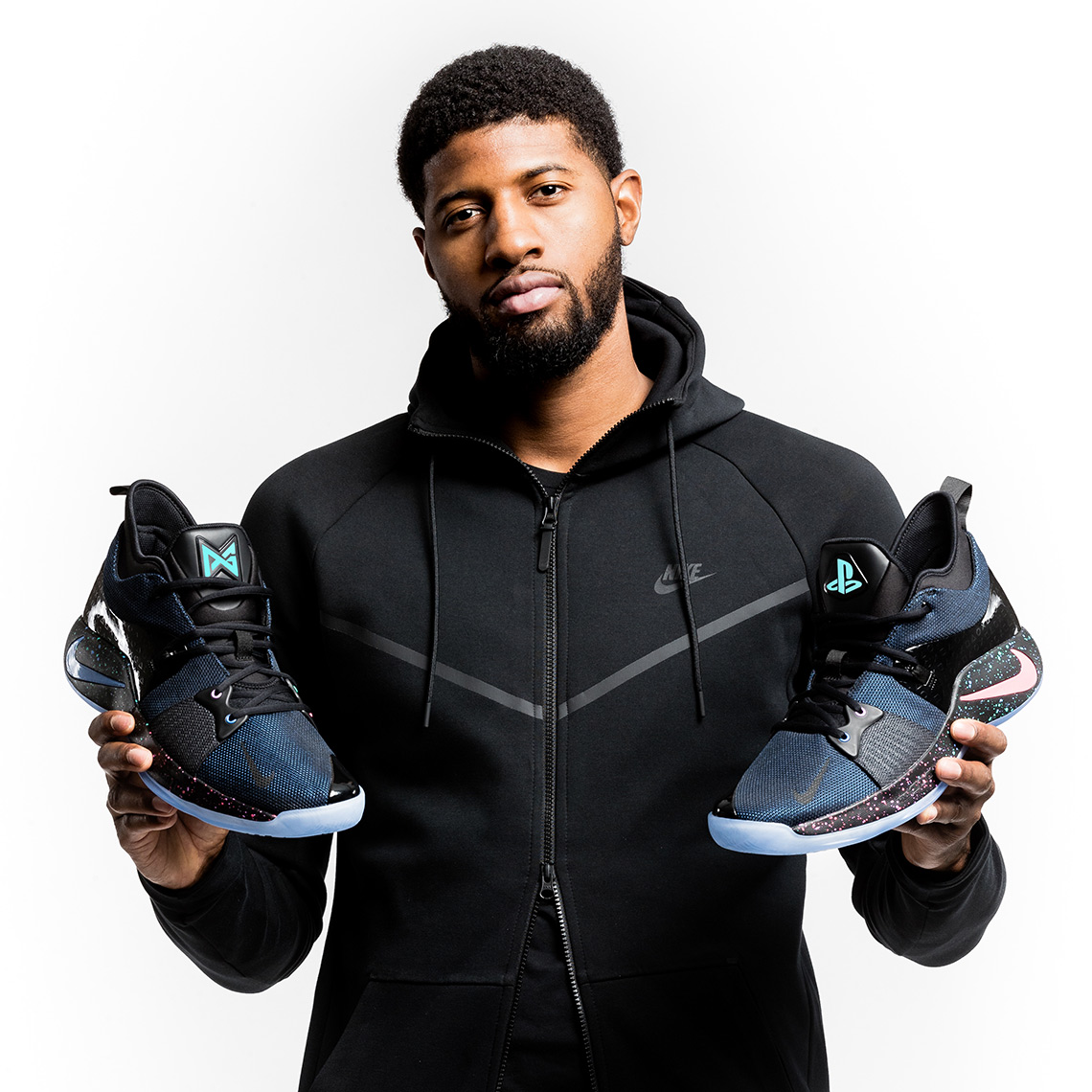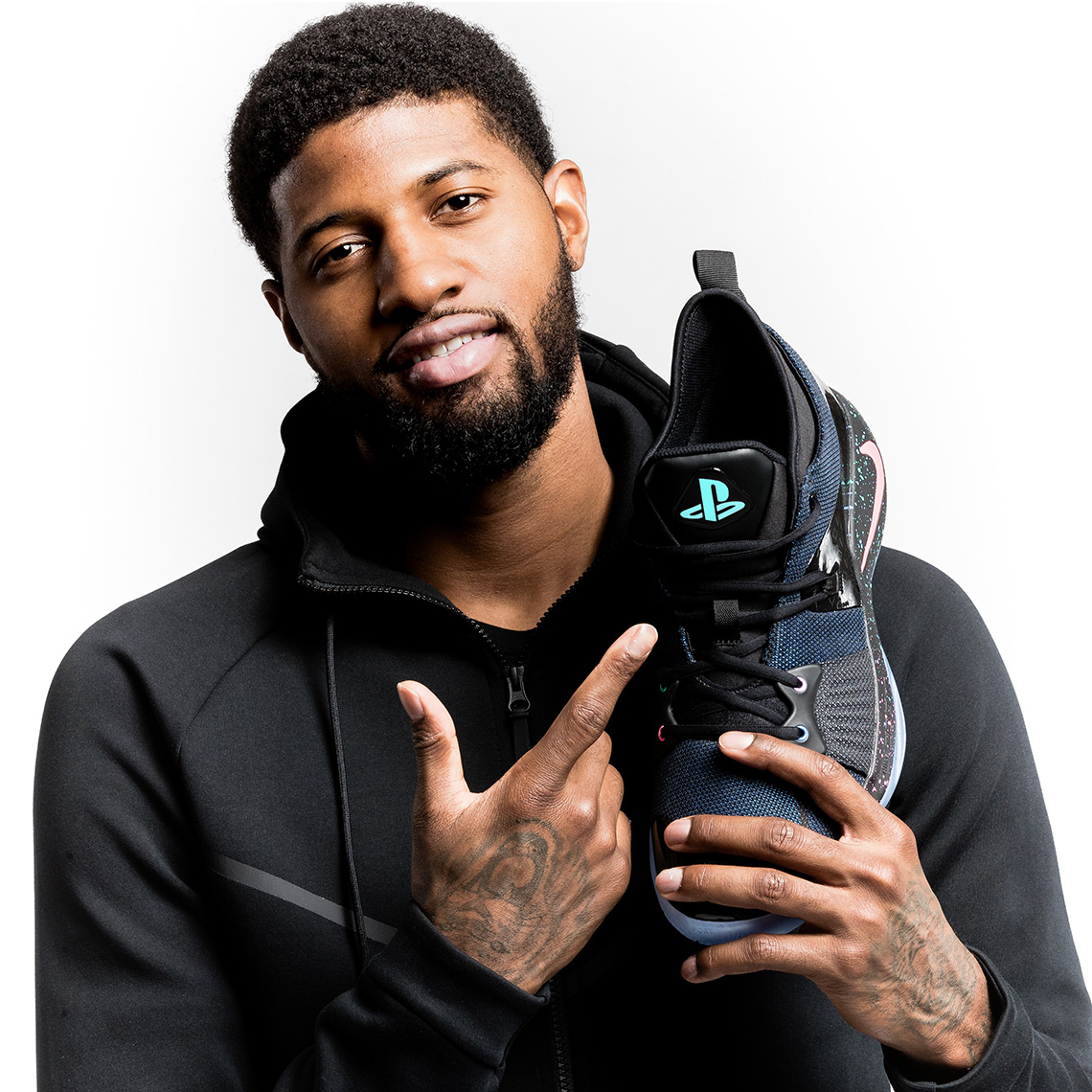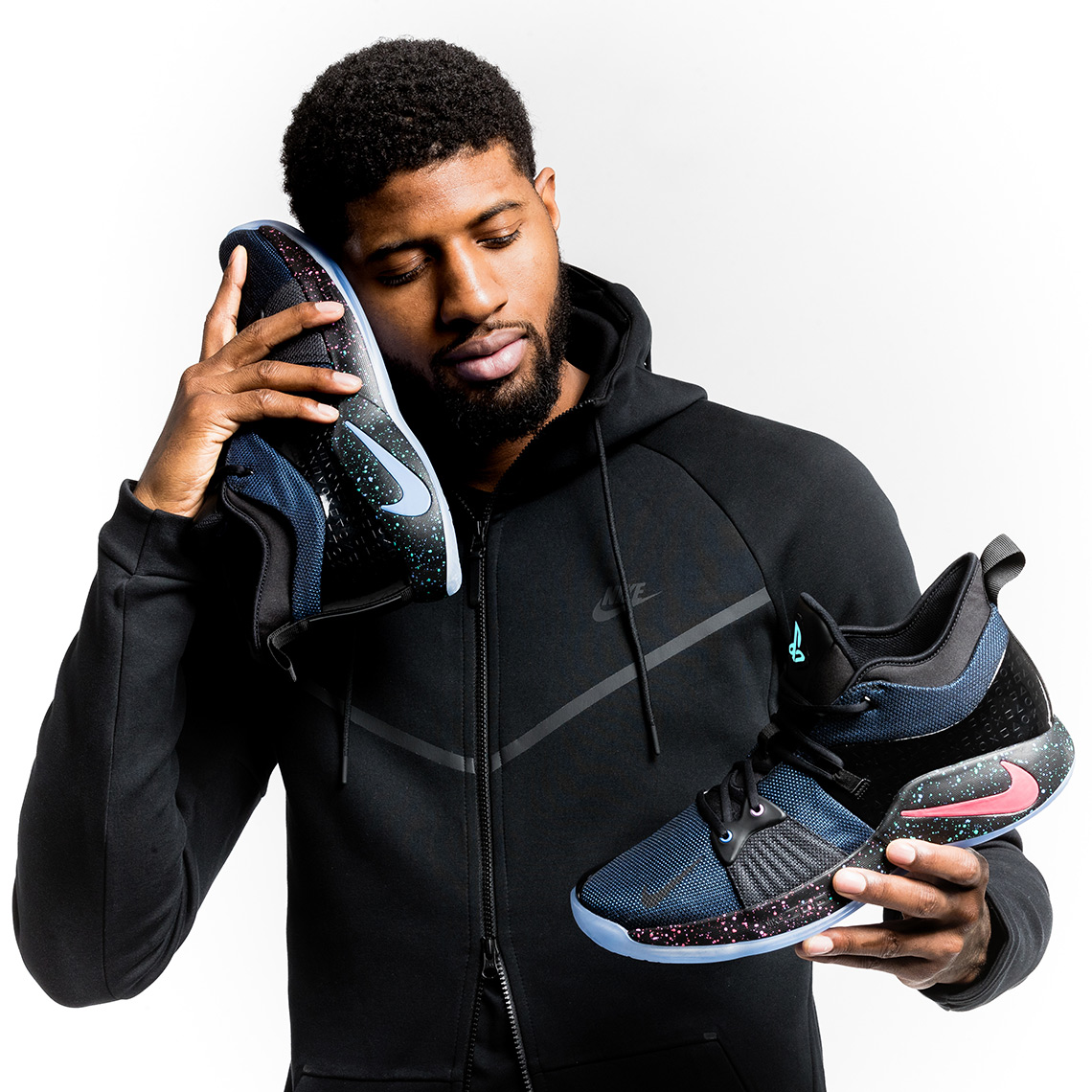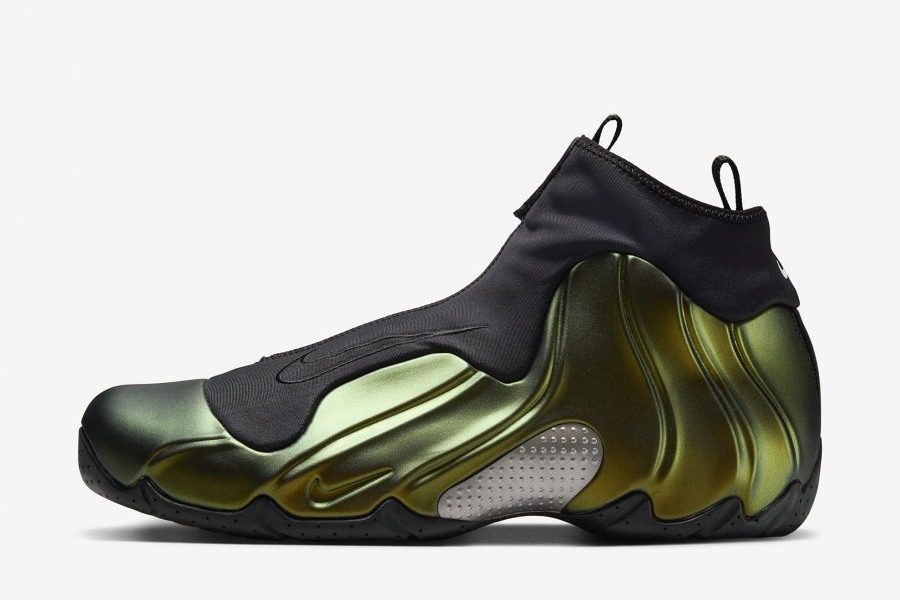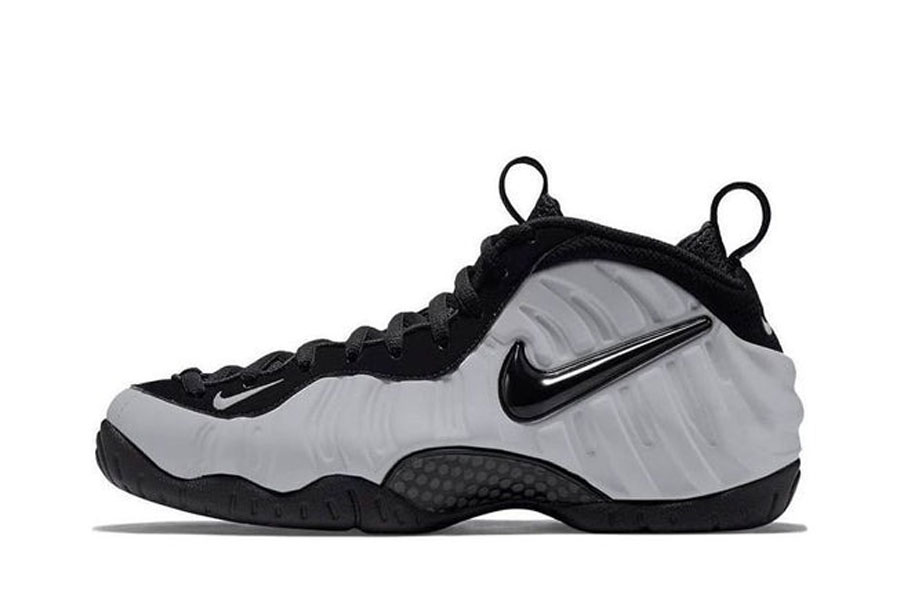
Launching on February 10th is an otherworldly colorway inspired by Paul’s favorite gaming console legacy, the Sony Playstation. The black and blue upper seems to reference the colors of the Playstation 2, which Paul received as a Christmas gift from his father ages ago, while four key colors found on the signature shapes on the controller buttons decorate the rest of the shoe with speckled midsoles, lace eyelets, and custom insoles. You’ll see Sony’s logo on the left tongue, while “PG13” is written in one of their typefaces.
Prior to taking the helm of the Paul George signature line, footwear designer Tony Hardman was delivering some stylish low-cut performance basketball footwear like the Run The One, Zoom Crusader, and Hyperchase – three shoes that were wildly popular among NBA players roughly 2-3 years ago. He learned some of the signature shoe process while working on LeBron James’ Ambassador line.
He knows me a little better, I know him a little better, and that’ll continue to develop as it goes.
Tony Hardman on his relationship with Paul George
Sneaker News: Let’s start with the obvious. Why is there no strap?
Tony Hardman: He just wanted to change things up. It wasn’t a functional thing where he didn’t like the strap. Just visually, he wanted to go in a different direction and switch it up a bit.
SN: You mentioned in our last interview regarding the first shoe that Paul wasn’t too familiar with Nike cushioning, that he wouldn’t be able to tell the difference between Zoom and Lunar. With one full process under his belt, has he matured as a co-designer?
TH: He definitely learned from the process with the PG1 and even with the 2. He’s more in tune with what’s going on with his shoe. Before he wasn’t really able to articulate about it, but now he’ll be able to tell you what’s exactly going on in the shoe. Honestly, he’s still learning about the design process, but he has a better grasp on technology and those types of things.
SN: The designer-athlete relationship has been especially key for Nike. How has your relationship with Paul changed with two shoes completed and a third in the works?
TH: Paul has always been super-welcoming and very easy to get along with. There was never any awkwardness or anything. He’s just super chill – he comes from a small town called Palmdale and he’s used to growing up laid back, and that’s just the kind of guy he is. We’re closer, and I know more about what he’s thinking now, which is good. From that standpoint, he knows me a little better, I know him a little better, and that’ll continue to develop as it goes.
We always talk about “evolution vs. revolution”, kinda like what you see with the Kobe line and Eric Avar.
Tony Hardman on improving upon the PG 1
SN: Because he’s so laid back, has there been any obstacles with communication?
TH: He’s not super vocal. If he’s not saying anything, he probably likes it. Actually, one of the obstacles we had with the PG 1 was just getting him to say when he didn’t like something. He’s kinda like the guy who doesn’t want to hurt your feelings, but we encourage him to tell us how he really feels. That was something we had to break through, for him to be comfortable enough to say what he wanted to say to us, and we’ve that for a while now.
SN: What basketball fans and sneaker enthusiasts really loved about the PG 1 was the leathers and suedes – the “90s” style of materials. Will we see more of that in the PG 2?
TH: Yes, definitely more of that coming. We’ve got some areas on the shoe we’ve focused. Overall, we’re looking to refresh the shoe and give consumers a reason to come back to it, but you’ll definitely something different and special with every colorway.
SN: Can you speak more on the functional changes of the PG 2?
TH: We just want to make sure that we really deliver a multi-directional shoe. In terms of traction, we want to make sure that it’s tuned perfectly so that any direction Paul or any player wants to go, it’s there for him. We just make sure he’s locked in, and all players need to be locked in. When he’s coming down the court and popping those threes or coming around those screens really hard, he really likes that snug fit on the heel
Let their personality come out, and that can be what separates the shoe from the rest.
Tony Hardman on the saturated signature shoe market
so he’s not slipping inside the shoe. His needs didn’t change from the PG1, but we always talk about “evolution vs. revolution”, kinda like what you see with the Kobe line where Eric Avar will tweak the shoe a little bit to make it a little better each time out. We try to do that, and it’s definitely more challenging at the $110 price-point than it is at the Kobe price-point, but I think we’ve been able to improve every part of the shoe.
SN: With so many signature shoes out on the market, how do you, as a designer, ensure your work stands out?
TH: It’s a very saturated market for signature shoes right now, but it’s also interesting and fun. I think the main thing you have to do is be in tune with your athlete and let their personality come out, and that can be what separates the shoe from the rest. As long as you’re really bringing their personality out and what’s unique to them, the people that want to connect with it will. That’s what we try to do – keep it really authentic to him. He’s really relatable to kids because he’s a super humble guy, but also this superstar. As long as we can keep along that path and continue to innovate and make his shoe great for him, then we’ll hit that mark.


